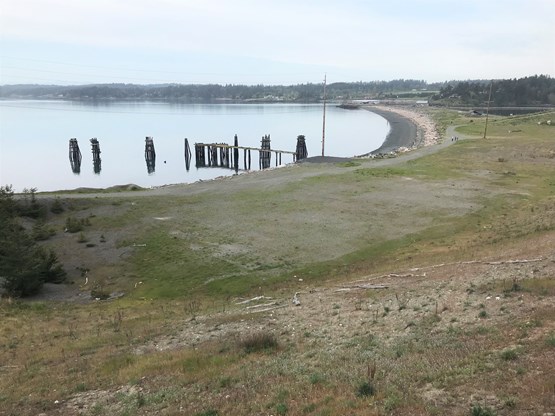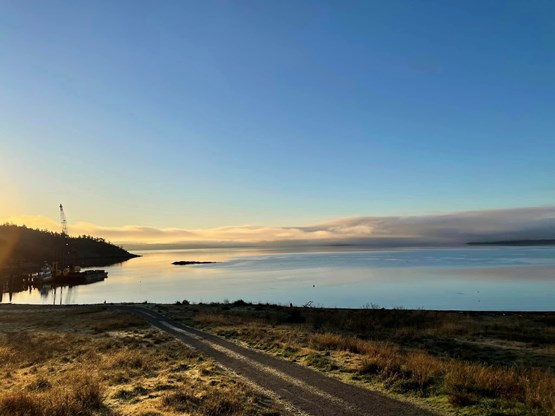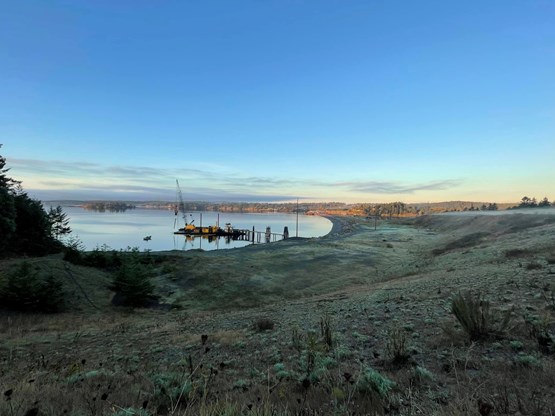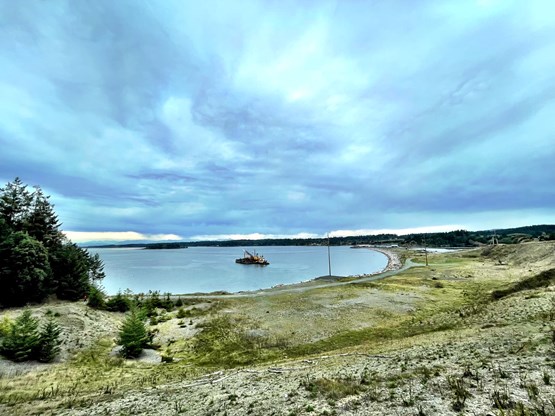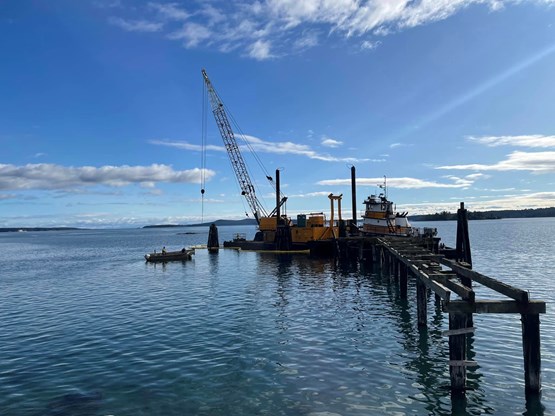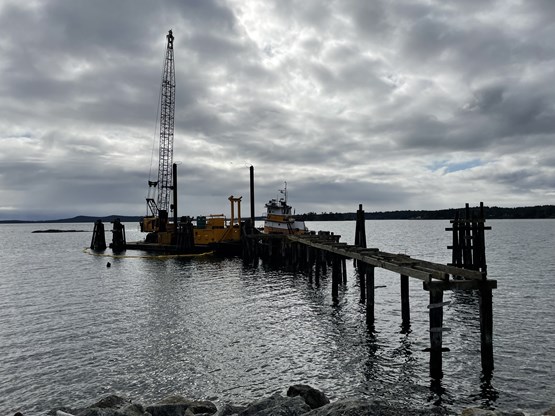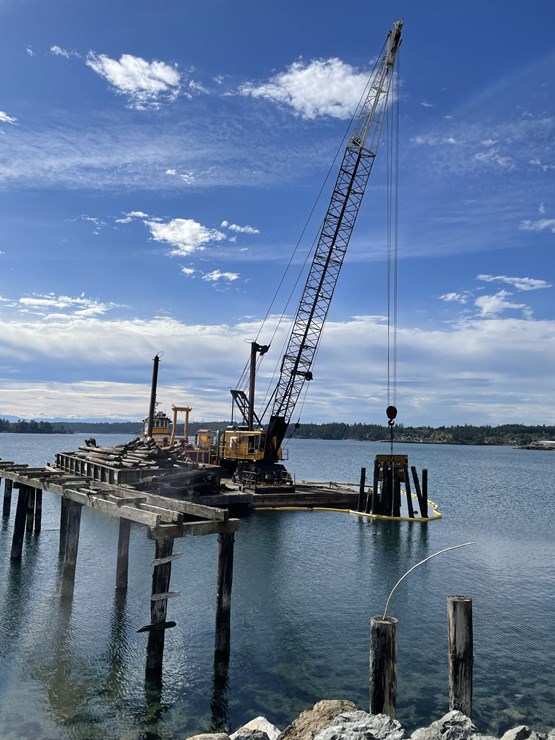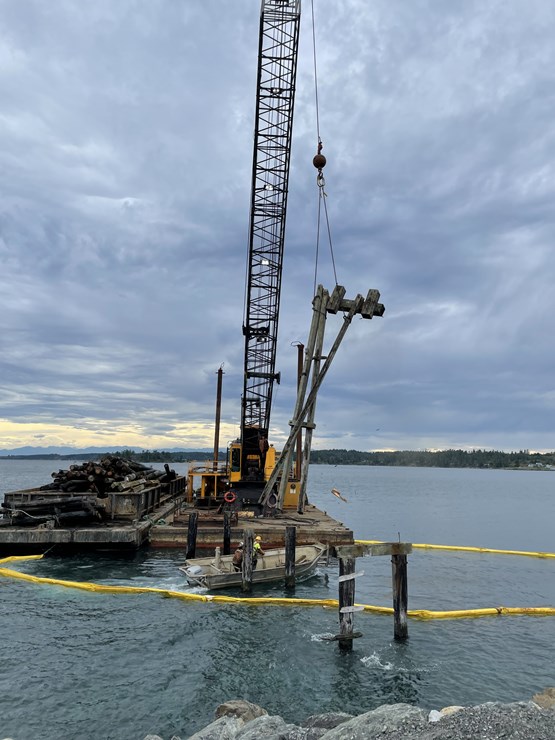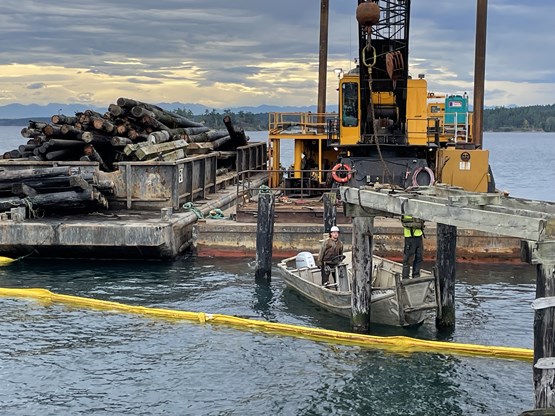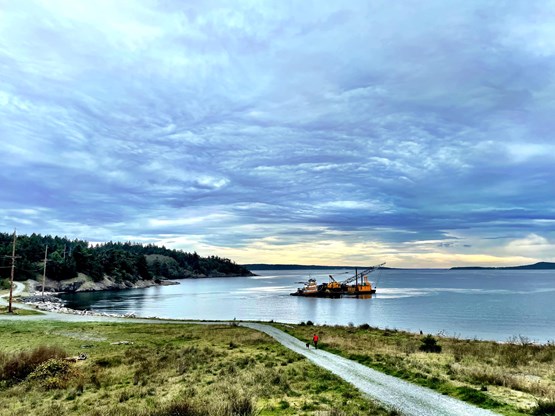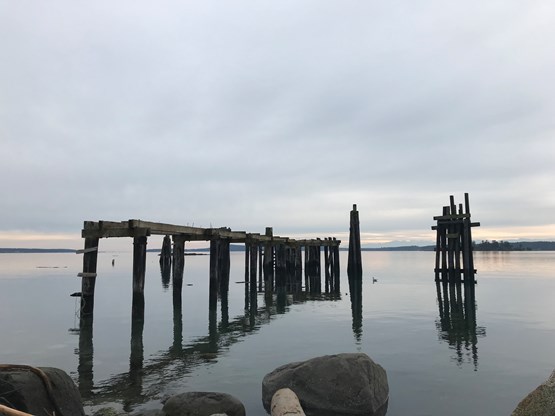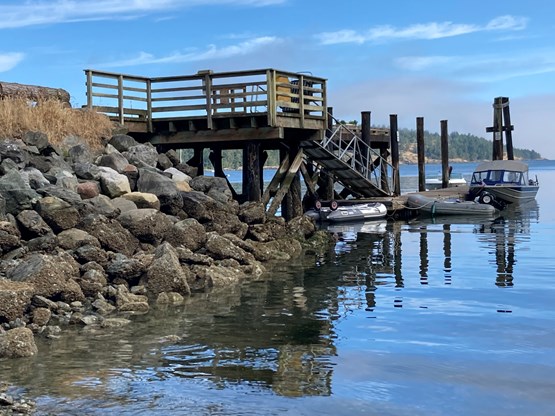Jackson Beach Phase 1 Complete!
Over the course of two and half days in mid-October, the remnants of the former La Farge gravel pit pier were removed. For many, this was a piece of history that was hard to see disappear, but the derelict pier had been crumbling for decades and the creosote piles were leaching toxins into the nearshore waters of Jackson Beach. Creosote-treated wood was a standard material used to build marine infrastructure but it created a generational impact on our sensitive marine environment.
This successful removal lays the first steps toward a restoration of the shoreline that will improve habitat for forage fish, vital food for salmon, sea birds, and marine mammals. For the community, the eastern end of Jackson Beach, is important as an active barge landing where San Juan County Public Works brings in needed road materials, and also where affordable housing units are occasionly brought in. In recent years, through an agreement with the Port of Friday Harbor, the beach has also become an important location for a kayak launch, helping to disperse kayak tours to different launch sites around the island. All this highlights the importance of the beach to the community and the local marine environment. For those that don't want this piece of island history forgotten fear not, interpretive signage telling the stories of this area are being planned.
Huge thanks to Quigg Brothers for a quick and smooth removal operation, and thanks also to the Northwest Straits Commission for securing the funding, and the Marine Resources Committee for deciding that this was the project to do!
